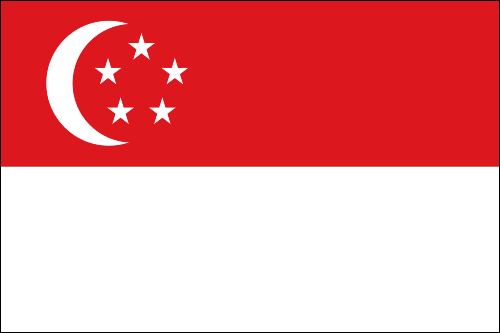According to an article by Naomi Lindt entitled “Expanding the Cultural Realm in Singapore” published on 10th June 2011 Singapore has always been the “cultural desert”. It is known for its efficiency, modernity, tidiness and order, compared to the chaotic rest of Southeast Asia. Now Singapore wants to change its image from a sanitized mall culture to a new authentic one, famous for its art and architecture. The government is trying to support local artists and architects and has invested more than a billion dollars during the last 20 years to turn Singapore into a “global arts city” by 2015.
The country has grown in many cultural aspects. It has founded new cultural institutions, has built museums and has organized several art events. For example, they arranged the Art Stage Singapore, an event that is similar to Art Basel.
It’s not only the visual art that is evolving, however. Local fashion designers own their own boutiques and have created their own fashion labels. Instead of selling all kinds of well-known international brands, Singaporean young fashion designers are making a name for themselves by successfully inventing their own clothing lines.
The Singaporeans are heading towards a bright cultural future in terms of experimenting and creating new things and making progress in the fashion industry. More and more citizens are buying local. They have noticed the great potential of their country, which is still developing when it comes to cultural issues. They have realized that “what makes Singapore special is what Singaporeans make and create.” With this mindset people in Singapore are helping to change society. They are also preparing the way for a better future for themselves and their country
Singapore is generally known for its modern architecture, its malls and its high international rankings with regard to education, healthcare, and economic competitiveness. But what Singapore is missing is culture. There are a few reasons why Singapore has never really developed an authentic identity. One of the reasons is its history. From 1826 to 1963 Singapore was a British colony. During this time an independent culture didn’t have the chance to emerge. Most British habitants didn’t really care because they weren’t planning on settling down for good.
Since their independence, Singapore has been creating an identity of its own and has produced a culture of its own. A factor affecting this process is that 42% of Singapore’s population are foreigners. There are 4 different official languages. English is the first official language, even though 20% of the population doesn’t even speak English. With such a multiracial population there are also many different religions. So creating a consistent culture for all of Singapore’s population is very difficult.
What we have to say about this:
The article above describes how people in Singapore and the government are trying to achieve this goal. A problem that seems to be coming up is the restrictions imposed by the government. During an art exhibition, artists were afraid the “Media Development Authority” would show up if they discussed controversial topics like the death penalty, immigration and national identity. Now to understand this we have to find out who this authority is and what it stands for. The Media Development Authority of Singapore (MDA) explains their purpose on their website: “The Media Development Authority of Singapore (MDA) promotes and regulates the media sector so as to contribute towards economic growth and help foster a cohesive and inclusive society in Singapore “. So on the one hand they promote the means of communication within Singapore but regulate and censor Television, Radio and Newspapers/Magazines and other ways of communication. It seems that an art exhibition that thematises controversial topics was seen by the MDA as a provocation, making it necessary in their eyes to step in. There are other companies working for the government controlling the media.
Compared to Switzerland Singapore is a very young state. Founded in 1291 Switzerland has had 700 years to establish its own culture. We can see this in our daily lives; in Basel traces of our ancestors are everywhere. We see them in the old buildings dating back to up to 800 years and in the variety of museums. The first public museum in Europe was opened in Basel in the 17th century. But what is similar to Singapore is that Switzerland also has four official languages. So culture in Switzerland really depends on where you are. The different regions were mostly influenced by their direct neighbors, France, Germany and Italy, with whom they share the language.
In Switzerland there is the “Federal agency for culture”. This organization generally just supports Swiss culture within the legal framework of Swiss laws. But it doesn’t specifically control it as much as the Singaporean government does.
To sum it up we can say that the culture in Switzerland differs a lot from the growing Singaporean culture. Just the fact that these two countries are located in completely different parts of the world reinforces this.
We personally hope that Singapore will succeed in developing a thriving culture of its, because it is important for a country and its people to have its own identity that unites them and at the same time remains authentic.

No comments:
Post a Comment